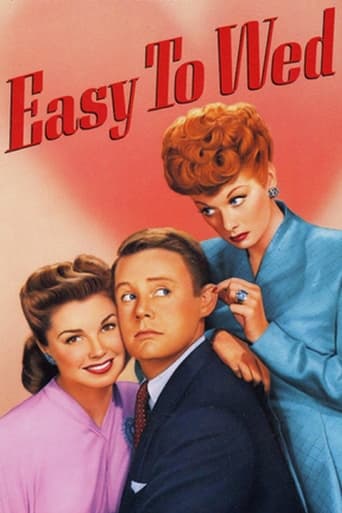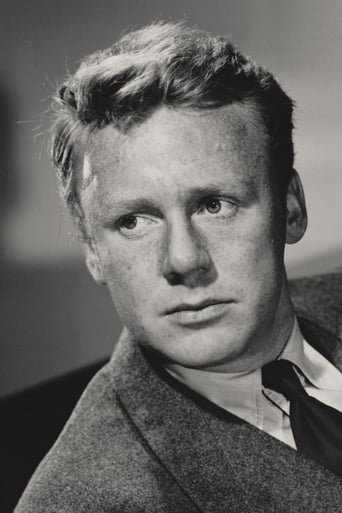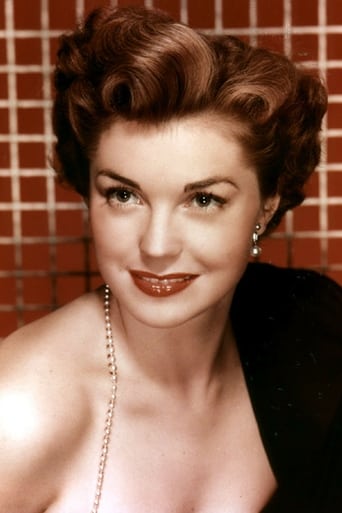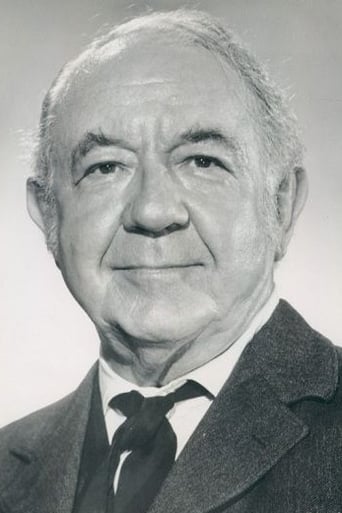weezeralfalfa
Unlike many reviewers, I haven't seen the '36 "Libeled Lady", except for a preview, to which the present film is commonly unfavorably compared. Movie studios of the late '40s and '50s chose to redo some popular films of the late '20s and '30s, usually in color, contrasting with the B&W of the original, sometimes converting a pure comedy or drama into a musical, or completely redoing the music, and often making substantial alterations of the screenplay. In the present case, apparently, relatively few alterations of the screenplay were made. However, duck shooting, rather than fishing, is scripted as the hobby of the debutante's father, and thus the skill that Bill Chandler(Van Johnson) feels he must pretend he knows about and quickly learn the basics about, in order to facilitate getting his foot in the door of presenting himself as a desirable romantic partner for his debutante daughter(Esther Williams). I won't bother reviewing the screenplay in much detail, as this has been done enough. I will note that, with the exception of the Lucy-Jean Harlow comparison, the main character actors in this film are all approximately 5 years younger than their counterparts in the '36 film, and thus they seem like a younger bunch, more appropriately single. Even Lucy seems younger than Jean, although she was considerably older.Van and Esther were very popular, separately or together, with film audiences during the mid-'40s to mid-'50s period. Van had the vaudevillian skills of light comedy, song and dance, as well as being suitable for serious roles, such as in "Thirty Seconds Over Tokyo". Esther came across as an ideal 'all-American' girl, most famous for her water ballets, but also with decent talent as an actress, sometimes singing a song or two. Too often, she was portrayed by others as being a poor actress, only of interest to audiences in swimming pools. Here, her performance is commonly very unfavorably compared to that of her costar: Lucille Ball, and predecessor, Myna Loy. Well, Lucy, long time costar of mostly 'B' films , for various studies, was rightly cast as a dizzy showgirl, who is swept up into the complicated romantic plot of a temporary shotgun marriage-of-convenience to a man she initially labels as a baboon or ape(hardly an apt description of handsome, mild-mannered, blond, Van!). She gets to lead a chorus in the stage song and dance number "The Continental Polka", which serves as Van's chance to initially evaluate her, as a prospective temporary 'wife', in order to create a scandal when he hopefully attracts the amorous attention of socialite Connie(Esther), in order to induce her father to drop a libel charge against the newspaper his friend Warren(Keenan Wynn) works for. Lucy is given a rare opportunity during her Hollywood period to display repeated scenes of zaniness, rather like those characteristic of Betty Hutton or Martha Raye, for example, and she well succeeds in them. In contrast, Esther's character is supposed to be snobbish man bait, who routinely turns down proposals. Initially, she sees Van as just another wannabe gold digger. But, she's eventually impressed with his persistence, imagination, and winning boyish personality, and lowers her guard. Her humor is more subtle than Lucy's, but appropriate for her character. Van displays his gift for parlor dialogue, comedy(especially relating to duck shooting),and a couple of musical numbers with Esther, as part of a stage production in one case.Columbian singing sensation, Carlos Ramirez, contracted to MGM during the mid-40s, solos one song, as part of a Mexican floor show, later privately reprised by Esther and Van. Near the end, is an impressive dance production, again with Latin American costumes and music, and including Esther and Van, in a portion. Ethel Smith is also on hand to entertain with her famous jazzy organ music, during the two Latin-themed productions. Both she and Carlos had been included, more prominently, in Esther's first water-themed film: "Bathing Beauty".I don't understand why Van's character has the parson sign the marriage certificate, instead of the agreed upon detail that he doesn't sign it, thus rendering Van's marriage -of-convenience to Lucy's character not legally binding. Thus, in the ending, when Van's and Esther's characters want to get married, they have to dig up the detail that Lucy's supposed divorce from her previous husband wasn't legal, thus also was her unconsummated marriage to Van's character. But Lucy spoils the apparently happy ending by revealing that she subsequently obtained a legal divorce, not included in the records Van checked, thus apparently invalidating the just legalized marriage of Van's and Esther's characters. Lucy gives quite an impressive speech about her feelings about the matrimonial mess. The film ends with this marriage-go-round still unresolved, unclear whether Lucy's character can be induced to cooperate, even with possible monetary reward, in dissolving her sham marriage to Van's character, and perhaps agreeing to a marriage with Keenan Wynn's character, as the others wish, and was her original intention.Van had costarred with Esther the previous year in the very popular "Thrill of a Romance", and would later costar with her in "Duchess of Idaho", and "Easy to Love", by which time noted baritone Howard Keel was also a frequent costar. Most of her films we would classify as minor musicals, in which very few of the songs were intended to become standards. Although many of Esther's films included a water ballet or two, in place of dance productions, some, including this one didn't(It had a dance production, instead). However, she does manage an impressive underwater clinch and kiss with Van!
dougdoepke
Okay, I'll try to summarize the storyline. If Homer can prove Connie's a man stealer he'll escape a 2-million dollar lawsuit. So he hires Bill to catch Connie's eye. But Gladys is married to Bill or is it to Warren. Then again, maybe she isn't. But then Bill marries Connie, but Bill's already married or maybe he isn't since no one knows who's divorced whom. Anyway, I give up because the plot's not important, anyhow.The movie's a visual treat, what with Williams, Johnson, and Ball being at their physical peak. I doubt there were three more beautiful people in Hollywood, especially Williams in a swimsuit. Then too, there's MGM's renowned production values lending the results a Technicolor sheen that makes you want to jump in. And is that really Fidel Castro at poolside (IMDB)! Now with all the physical assets, this musical comedy should be strictly memorable. But unfortunately it's not; as a mc the overall results are entertaining but only average. Director Buzzell fails to give many of the scenes the bounce they need, while the script has too many stretched-out, talky scenes. Together, we see pretty people in pretty places doing sometimes funny things (especially Ball), but without the needed zip, plus a storyline that defies analysis.Well, that's pretty much the case except for Ball, who shows (surprise, surprise) a lively flair for adding her own comedic bounce. And, if I remember correctly, this was one of her first comedic outings in what, of course, would become a legendary career. And get a load of the array of hats she gets to wear. Some look like they were taken off the New York skyline. Still, that combination of fiery red hair and deep blue eyes is absolutely dazzling. Anyway, this is the glamour studio MGM at its most glamorous and if the results are less than hoped, the movie's still a visual feast.
jhkp
The original film, Libeled Lady, was carefully tailored to suit the talents of its stars, William Powell, Jean Harlow, Myrna Loy, and Spencer Tracy. It's not easy to take such a star vehicle, and, without significant alterations, make it into a vehicle for four very different stars. I guess I thought the alterations weren't significant enough. I'd rather see Van Johnson shine in his own kind of role than try to fill the shoes of William Powell, for example. Johnson is about as successful playing a Powell part as Powell would be in Thirty Seconds Over Tokyo. Even if, on the surface, things have been spruced up to make it seem like a Johnson part, it really isn't. Only Lucille Ball succeeded in making me forget the original film when she was on the screen. Harlow was great, but Lucy is also great, in a completely different way. When she's on the screen it's hard to think of anyone else ever having played the role.This film seems to have been intended for black and white but switched to color at the last minute. The sets are painted and dressed for black and white - in muted tones of gray, brown, beige, dull green, etc. - throughout the film. The costumes are close to colorless a lot of the time. Brown and gray predominate. Not even a colorful necktie. Even in the musical numbers at the end, the sets are mostly white and gray.






